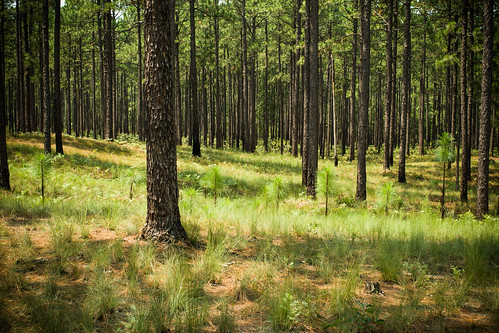地球更綠了! 植被總量十年有成 就怕乾旱來攪局
Category: 水新聞 Created: Friday, 03 April 2015 07:43
一項由澳洲主持的國際研究發現,儘管全球森林快速消失,但中國的大規模種樹活動和三大洲的降雨量增加,仍讓地球的總植被量在過去10年間增加了。
10年間 全球森林多爭取40億噸碳當量
研究團隊應用最新的技術,以衛星測量地表發射出的天然無線電波,並藉由分析過去20年的衛星資料,測量植被的生物量隨時間的變化。
這項發表於當期《自然氣候變遷》的研究發現,儘管熱帶森林持續大規模消失,2003年以來,地球總植被量增加了40億噸碳當量。
植被增加,表示澳洲的整體碳捕獲量也增加了。研究主要作者、新南威爾斯大學氣候系統科學中心遙測科學家Yi Liu博士說:「植被增加的主要原因是環境和經濟上的巧合,以及中國的大規模種樹計畫。」
「中國是唯一以種樹計畫,有目的地增加植被的國家。」Yi Liu表示。
例如中國的三北防護林計畫(又名綠色長城計畫),就是一系列的人工防風林種植計畫,用意是防止戈壁沙漠擴張。綠色長城預計於2050年完工,屆時將綿延2,800英哩(4,500公里)長。
中國種樹 降雨增加助莽原成長
不過中國種樹並非地球總植被增加的唯一原因。
「澳洲、非洲和南美的莽原植被也因降雨增加而增加;俄羅斯和前蘇聯地區廢棄農田的森林也開始重新生長。」Liu說。
「過去的植被生物量分析都聚焦在森林覆蓋率的變化;然而,我們的方法發現,在北澳洲持續砍伐森林、都市化,以及澳洲其他地區乾旱的情況下,南非和北澳洲的莽原植被增加更顯得出乎意料。」共同作者、澳洲國家大學學者Albert van Dijk教授說。
研究者認為,稀樹草原植被增加的主要原因是近年降雨量增加,而空氣中二氧化碳增加,可能也有助植物生長。
森林仍在消失 最怕長期乾旱
不過全球森林仍在消失中,尤其是亞馬遜森林邊緣和印尼蘇門達臘與加里曼丹,婆羅洲島上的印尼領土。
同時,另一位共同作者、澳洲聯邦科學與工業研究組織Pep Canadell博士指出,一旦莽原出現長期乾旱,情況就可能急轉直下。
「本研究顯示,碳捕捉深受每年莽原降雨量改變影響,對澳洲而言,甚至全球二氧化碳預算來說都是如此。我們仍要認清,若二氧化碳排放未被植被吸收,全球暖化就會快速加劇。」
自然雖然會幫助調節地球氣候,Canadell博士仍強調,要減緩全球暖化只有一途:「人類活動排放的二氧化碳有50%被植被吸收,仍有50%留在大氣中。唯一穩定氣候系統的方法是將全球化石燃料的碳排減至零。」
China’s large-scale tree planting efforts and increasing rainfall on three continents have contributed to an increase in the total amount of vegetation on Earth over the past decade – reversing previous global forest loss, an international team of scientists reports.
Despite ongoing large-scale deforestation in the tropics, the total amount of vegetation on Earth has increased by almost four billion tonnes of carbon since 2003, finds an analysis of 20 years of satellite data using a new technique – measuring Earth’s natural radio waves.
An Australian-led international team of scientists published these findings in the current issue of the journal “Nature Climate Change.”
“The increase in vegetation primarily came from a lucky combination of environmental and economic factors and massive tree-planting projects in China,” said Dr. Yi Liu a lead author and remote sensing scientist from the Centre of Excellence for Climate System Science at the University of New South Wales.
“China was the only country to intentionally increase its vegetation with tree planting projects,” he said.
For instance, China’s Three-North Shelter Forest Program, also known as the Green Great Wall, is a series of human-planted windbreaking forest strips designed to hold back the expansion of the Gobi Desert. It is planned to be completed around 2050, and by then it will be 2,800 miles (4,500 km) long.
But tree planting in China is not the only reason for the overall increase in Earth’s vegetative cover.
“Vegetation increased on the savannas in Australia, Africa and South America as a result of increasing rainfall, while in Russia and former Soviet republics we have seen the regrowth of forests on abandoned farmland,” said Dr. Liu.
Yet forest loss is still happening elsewhere around the world. The greatest declines have been on the edge of the Amazon forests and in the Indonesian provinces of Sumatra and Kalimantan – the Indonesian part of the island of Borneo.
For their study the researchers pioneered a new technique to map changes in vegetation biomass over time, using satellite measurements of natural radio waves emitted from the Earth’s surface.
“Previous analyses of vegetation biomass focused on forest cover change,” said fellow lead author Professor Albert van Dijk of The Australian National University.
“With our approach we found unexpectedly large vegetation increases in the savannas of southern Africa and northern Australia. The increase in Australia occurred despite ongoing land clearing, urbanization and big droughts across other parts of Australia,” he said.
The increased greening means the total amount of carbon captured in Australia’s vegetation has increased.
The main cause of this strong growth over the savannas came from higher rainfall, particularly in recent years, although higher levels of carbon dioxide in the atmosphere may have helped plants there to grow more vigorously, the scientists believe.
But the situation could rapidly reverse if the savannas experience extended dry periods, says CSIRO’s Dr. Pep Canadell, a co-author of the study.
“This study shows this capture of carbon is very sensitive to year-to-year changes in rainfall over savanna regions, both for Australia and for the global CO2 budget,” Dr. Canadell said.
“It’s important to recognize that global warming would be happening faster if some of our CO2 emissions were not captured by this vegetation growth,” he said.
But even with the good news of nature helping regulate Earth’s climate, Dr. Canadell said there is still only one way to reduce the impacts of global warming.
“We know about 50 percent of emissions from human activities stay in the atmosphere even after the other half is removed by terrestrial vegetation and oceans,” he said. “The only way to stabilize the climate system is to reduce global fossil fuel emissions to zero.”
※ 全文及圖片詳見:ENS
Powered by Steuernachrichten









